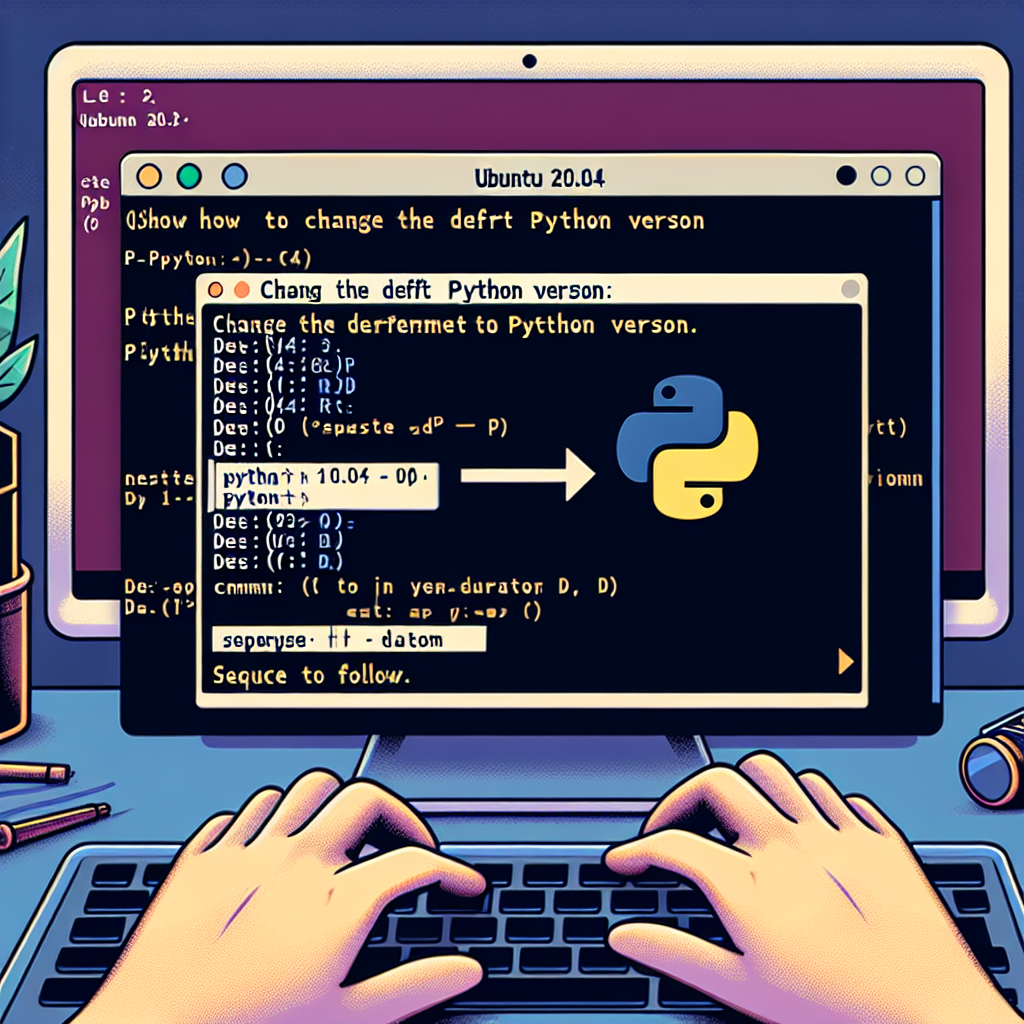Embarking on the Pythonic Path: A Guide to Switching Python Versions in Ubuntu 20.04

Ubuntu 20.04, also known as Focal Fossa, is a widely used Linux distribution that comes with Python pre-installed. However, developers often need to switch between different Python versions to manage various project environments or to ensure compatibility with specific libraries. This comprehensive guide will walk you through the steps to change the default Python version in Ubuntu 20.04, ensuring a smooth transition for your development needs.
Understanding Python’s Presence in Ubuntu 20.04
Before diving into the process of changing the default Python version, it’s important to understand how Python is integrated into the Ubuntu system. Ubuntu 20.04 typically comes with Python 3 pre-installed, as Python 2 has reached the end of its life. However, some applications might still rely on Python 2, necessitating its presence on the system.
Python 2 vs. Python 3
Python 2 and Python 3 are significantly different, and not all Python 2 code is compatible with Python 3. This is why having the ability to switch between versions is crucial for developers working with legacy code or transitioning to newer Python 3 syntax.
Preparing for the Version Switch
Before you begin changing the default Python version, it’s essential to ensure that your system is up to date and that you have the necessary versions of Python installed.
Updating Your System
Always start by updating your package list and upgrading the existing packages to their latest versions. You can do this by running the following commands in the terminal:
sudo apt update
sudo apt upgrade
Installing Python Versions
If you need to install a specific version of Python that is not already present on your system, you can do so using the apt package manager. For example, to install Python 3.8, you would use:
sudo apt install python3.8
After installation, you can check the available Python versions by listing them:
ls /usr/bin/python*
Changing the Default Python Version
With the necessary Python versions installed, you can proceed to change the default Python version using the update-alternatives tool, which manages symbolic links for default commands.
Setting up update-alternatives
First, you need to set up the alternatives for the different Python versions. Here’s how you can do it for Python 3.8:
sudo update-alternatives --install /usr/bin/python3 python3 /usr/bin/python3.8 1
Repeat this step for any other Python versions you wish to use, ensuring you change the version number and priority accordingly.
Selecting the Default Version
Once you have set up the alternatives, you can select the default version by running:
sudo update-alternatives --config python3
This command will present a list of installed Python versions, allowing you to choose the default by entering the corresponding selection number.
Verifying the Change
After configuring the default version, verify the change by checking the Python version:
python3 --version
The output should display the version number you selected as the default.
Handling Python 2 Compatibility
If you need to maintain compatibility with Python 2, you can use a similar process to set up and select the default version for Python 2 using update-alternatives.
Best Practices for Managing Multiple Python Environments
While changing the system-wide default Python version can be useful, it’s often recommended to use virtual environments for project-specific Python versions and dependencies. Tools like venv and virtualenv allow you to create isolated Python environments, avoiding conflicts between projects.
Using venv
To create a virtual environment with venv for Python 3.8, for example, you would run:
python3.8 -m venv my_project_env
Activate the virtual environment with:
source my_project_env/bin/activate
Your prompt will change to indicate that you are now working within the ‘my_project_env’ virtual environment.
Deactivating Virtual Environments
When you’re done working in a virtual environment, you can deactivate it by simply running:
deactivate
This will return you to the system’s default Python environment.
FAQ Section
What is the difference between update-alternatives and virtual environments?
update-alternatives is used to manage system-wide default commands, including the default Python interpreter. Virtual environments, on the other hand, are used to create isolated Python environments for individual projects, allowing for different versions and packages without affecting the system defaults.
Can I use update-alternatives to switch between Python 2 and Python 3?
Yes, you can use update-alternatives to manage both Python 2 and Python 3 versions. However, it’s important to note that they are managed separately, with ‘python2’ and ‘python3’ as their respective commands.
Is it safe to change the default Python version in Ubuntu?
Changing the default Python version can lead to system issues if certain system tools rely on a specific Python version. It’s generally safer to use virtual environments for development work to avoid potential conflicts with system applications.
How do I revert to the original default Python version?
To revert to the original default Python version, you can use the update-alternatives –config command again and select the original version from the list provided.
Conclusion
Changing the default Python version in Ubuntu 20.04 can be a powerful tool for developers needing to manage multiple projects or maintain compatibility with different versions of Python. By following the steps outlined in this guide, you can confidently switch between Python versions while minimizing the risk of disrupting your system’s stability. Remember to consider the use of virtual environments for an even more flexible and project-specific approach to Python development.

